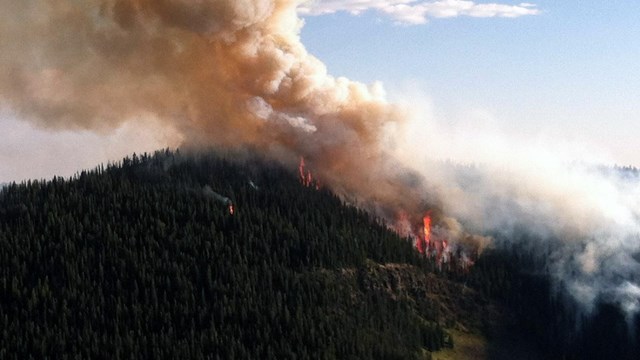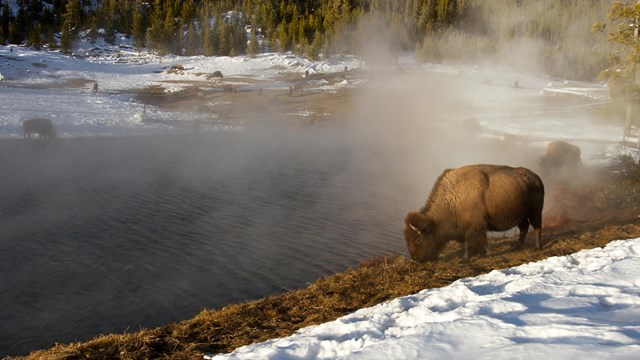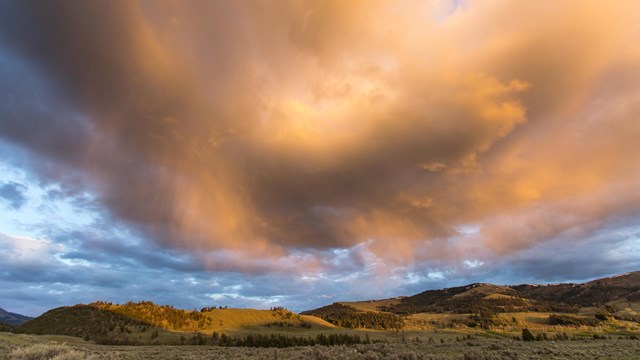
NPS/Neal Herbert The Clean Air Act Amendments of 1977 designated Yellowstone and Grand Teton among the 156 national parks and wilderness areas as Class I airsheds, requiring the most stringent air-quality protection within and around their boundaries. Yellowstone and Grand Teton are in compliance with federal air quality standards for human health. However, air-quality trends may be affecting other aspects of the ecosystem. Even at relatively low levels, such as those found in the Greater Yellowstone Ecosystem, air pollution and the subsequent deposition of pollutants in water and soil can leach nutrients from the Earth, injure vegetation, and acidify and over-fertilize lakes and streams. The thin soils, sparse vegetation, short growing seasons, and snow-based water supply of these high elevation areas limit the amount of nitrogen that plants can effectively use. These conditions make the area more vulnerable to the effects of acidification and nutrient enrichment from nitrogen deposition. For example, nitrogen in precipitation has increased at many western sites as a result of fertilizer use and feedlots. Although nitrogen is a nutrient needed for plant growth, too much nitrogen disrupts native plant communities that are adapted to low-nitrogen conditions; high nitrogen levels can advance the spread of nonnative species that increase fire frequency. Acidification of high-alpine lakes from sulfur and nitrogen deposition can cause the loss of macroinvertebrates and fish. Long-term changes in the composition of algae in several alpine lakes in Yellowstone and Grand Teton are correlated with increased nitrogen. Naturally occurring ozone in the upper atmosphere protects life by absorbing the sun’s ultraviolet rays, while ground-level ozone is a pollutant that forms when nitrogen oxides from vehicles, power plants, and other sources combine with volatile organic compounds. Ozone concentrations in Yellowstone typically peak in spring rather than summer, indicating that human influences are less significant than changes in atmospheric circulation and lengthening daylight. Nonetheless, in addition to potentially causing respiratory problems in people, ozone levels during the growing season may be high enough to prevent sensitive species, such as aspen, from reaching full growth potential. Sources of Particulate MatterThe largest source of particulate matter in Greater Yellowstone is smoke from wildland fires, which is considered part of the area’s “natural background conditions” and is taken into consideration in establishing the threshold for “good” visibility. Emissions from prescribed fires have been relatively insignificant. Because of prevailing winds, Wyoming oil and gas development has not had a detectable effect on air quality in Yellowstone. Related Articles
Fire
Fire is a natural process and shapes the ecosystem. 
Greater Yellowstone Ecosystem
Yellowstone is the heart of one of the largest, nearly intact temperate-zones on Earth. 
Air
Visit the National Park Service's subject site about air. |
Last updated: April 17, 2025
